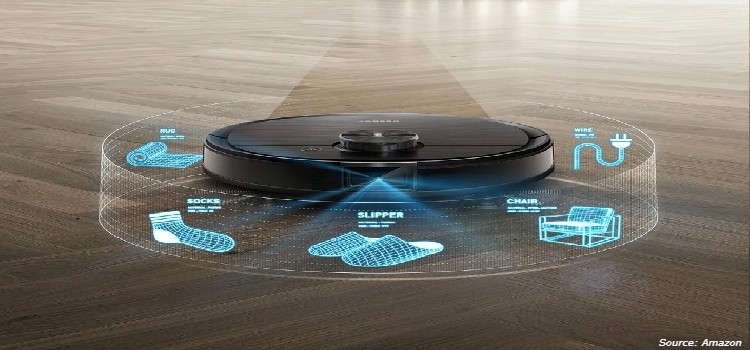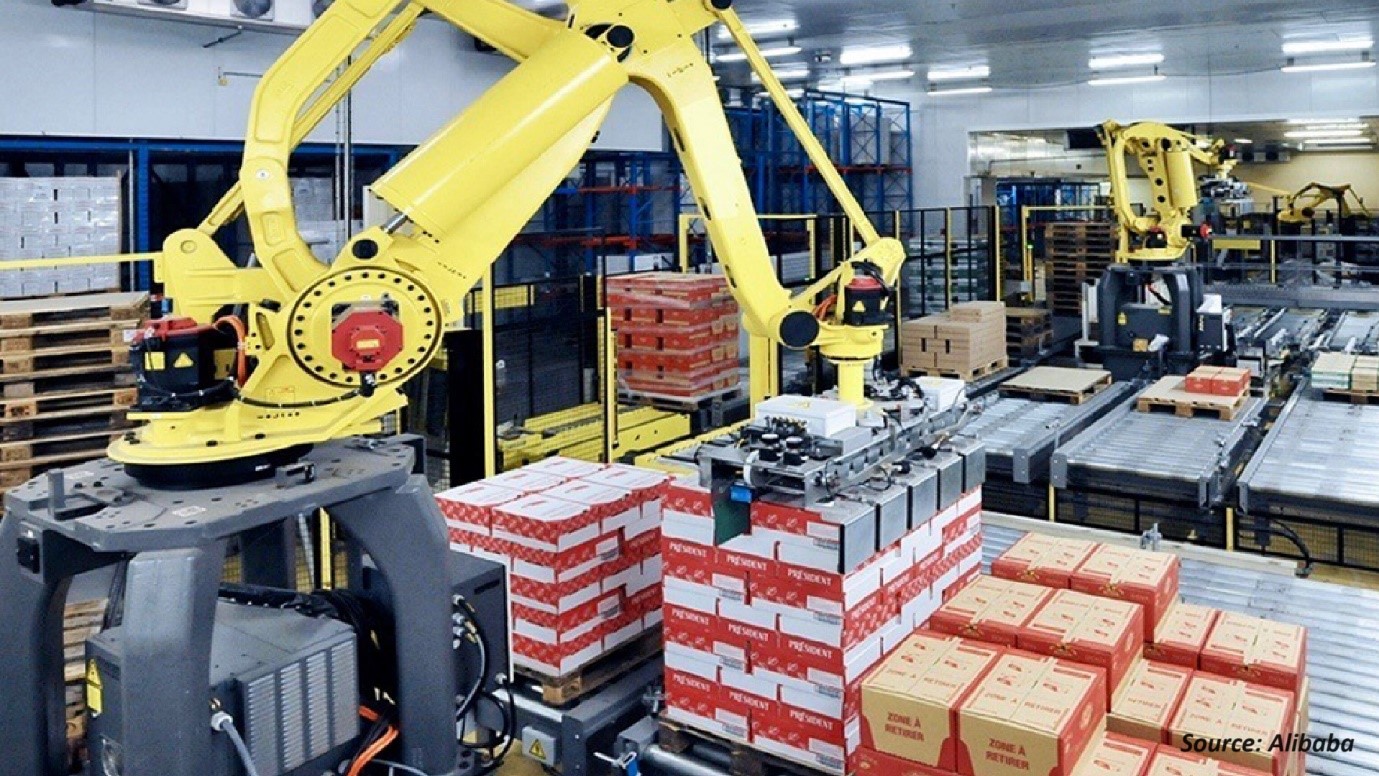
Exoskeletons Market by Component (Hardware and Software) by Mobility (Mobile and Fixed), by Power Type (Powered and Passive), by Body Type (Complete Body, Upper, and Lower Extremities), and by End User (Healthcare, Industrial, Defense & Aerospace, and Others) Global Opportunity Analysis and Industry Forecast 2023-2030
Market Definition:
The Exoskeletons Market size was valued at USD 426.1 million in 2022 and is predicted to reach USD 2220.6 million by 2030, with a CAGR of 22.9% from 2023 to 2030. An exoskeleton, also known as an exosuit or powered exoskeleton, is a wearable mechanical structure designed to enhance and augment the physical abilities of the user. It involves sensors, actuators, mechanical structures, algorithms, and control strategies that are capable of acquiring information to execute a motor function. Exoskeletons can assist with tasks such as heavy lifting, rehabilitation, or enhancing endurance and mobility. They can be powered or unpowered and find applications in healthcare, military, industrial, and entertainment industries. Their purpose is to augment strength, improve mobility, and reduce the risk of injuries during physically demanding activities.
Market Dynamics and Trends
Rising demand for exoskeletons in the industrial sector for a variety of applications such as body weight support, lift assistance, load maintenance, positioning correction, and body stabilization drives the growth of the market. For instance, in August 2020, Ekso Bionics, an industry leader in exoskeleton technology for medical and industrial use, launched EVO, an endurance-boosting assistive upper body exoskeleton that alleviates the burden of repetitive work. Building on the Company’s trailblazing EksoVest technology, EVO’s innovative design is the next step in the evolution of industrial exoskeletons. Also, the surging cases of spinal cord injury, rehabilitation, multiple sclerosis, stroke, and others increase the demand for exoskeletons in the healthcare industry. For instance, in May 2021, Ekso Bionics Holdings, Inc. an industry leader in exoskeleton technology for medical and industrial use, partnered with Kindred Healthcare, and launched EksoNR, the most clinically used robotic exoskeleton. EksoNR is a robotic exoskeleton device that empowers patients recovering from acquired brain injury, stroke, and spinal cord injury to learn to walk again with a more natural gait, which in turn increases the demand of exoskeletons market.
Furthermore, the market for exoskeletons is experiencing growth due to the increasing efforts of organizations to extend the advantages of exoskeleton technology through R&D to patients. As an example, The International Spinal Cord Society conducted a clinical trial called WISE in 2022. This trial focused on a 12-week regimen of exoskeleton-based robotic gait training to monitor significant enhancements in independent gait speed among individuals with chronic incomplete spinal cord injury (iSCI).
However, the high cost of exoskeleton equipment is expected to restrain the growth of the market during the forecast period. On the other hand, the introduction of soft exoskeletons that consist of fabric and flexible, artificial muscles, and offer multiple advantages over their metal counterparts is expected to create lucrative opportunities for market players in the future.
Market Segmentations and Scope of the Study
The global exoskeletons market is segmented into component, mobility, power type, body type, end user, and geography. On the basis of component, the market is divided into software and hardware. On the basis of mobility, the market is classified into mobile and fixed. Based on power type, the market is divided into powered and passive. On the basis of body type, the market is segmented into the complete body, upper, and lower extremities. On the basis of end user, the market is bifurcated into healthcare, industrial, defense & aerospace, and others. The regional breakdown includes regions such as North America, Europe, Asia-Pacific, and RoW.
Geographical Analysis
North America region holds the dominant share of the exoskeletons market at present and is expected to continue its dominance during the forecast period. The increasing number of people diagnosed with Parkinson's disease, a condition that gradually impacts the nervous system and the body parts controlled by nerves, is playing a significant role in driving the expansion of the exoskeleton market. These exoskeleton devices have the remarkable ability to be customized and programmed to offer essential aid to individuals living with Parkinson's. Through these technological wonders, people with Parkinson's can regain a measure of their mobility, achieve a sense of independence, and improve their overall motor function. According to the report published by World Health Organization Parkinson’s disease caused 34,491 deaths in the United States in 2020. Moreover, the presence of various market players such as Rewalk Robotics and Ekso Bionics that are adopting several market strategies to increase their market presence across the region, further propel the growth of the market. For instance, in March 2021, ReWalk Robotics and BKK Mobil Oil Insurance signed an agreement under which ReWalk Personal Exoskeleton devices will be given to the insurance company's qualified beneficiaries who have suffered spinal cord injuries.
On the other hand, Asia-Pacific is expected to show a steady rise in the exoskeletons market owing to rising cases of road accidents in the region that further causes neurological impairments including spinal cord injury, leg injury, and stroke. According to World Health Ranking, a report published by World Health Organization stated that in 2020 road accidents caused 250,272 deaths in China. Moreover, the market is growing due to an increasing trend of older individuals using exoskeletons to assist with heavy lifting tasks, driven by the aging population. Japan’s population is rapidly aging, with 28 percent of people aged 65 or older. In Japan, where industries like construction, manufacturing, and farming lack workers, older individuals are adopting exoskeletons to extend their working years. These wearable devices provide vital support for handling physical challenges, enabling them to continue working. This trend contributes significantly to the market's growth.
Competitive Landscape
Various leading market players operating in the global exoskeletons market includes Ekso Bionics Holdings, Inc., ReWalk Robotics Ltd., Parker Hannifin Corp, CYBERDYNE Inc., Bionik Laboratories Corp, Rex Bionics Ltd., B-TEMIA Inc., Hocoma AG, Wearable Robotics SRL, and Gogoa Mobility Robots SL. These companies are adopting various strategies including FDA approval and product launches to enhance their product and increase their dominance over global market.
For instance, in March 2023, ReWalk Robotics Ltd. received FDA clearance for its ReWalk Personal Exoskeleton technology to be used on stairs and curbs in the United States. This makes it the only personal exoskeleton with FDA clearance for this purpose. The innovative combination of the ReWalk Exoskeleton's strong mechanical design with specialized stair climbing software enables users to navigate a variety of environments, increasing their ability to engage in walking activities and benefit from the health advantages of walking in their daily lives.
In addition, in April 2021, Ottobock launched the Paexo Shoulder Jacket, Paexo Cool Sleeve, and Paexo Thumb Slim at the Hannover Messe Digital Edition 2021 event. These devices provide significant relief for the body during strenuous activities such as overhead work or lifting packages.
Also, in 2020, Ekso Bionics received 501(k) clearance from the FDA to market its EksoNR robotic exoskeleton for patients with brain injury (ABI). EksoNR is the first exoskeleton device to be approved by the FDA for rehabilitative usage of ABI, considerably extending the device's indication to a larger patient population.
Key Benefits
-
The report provides quantitative analysis and estimations of the exoskeleton market from 2023 to 2030, which assists in identifying the prevailing market opportunities.
-
The study comprises a deep dive analysis of the exoskeleton market including the current and future trends to depict prevalent investment pockets in the market.
-
Information related to key drivers, restraints, and opportunities and their impact on the exoskeleton market is provided in the report.
-
Competitive analysis of the players, along with their market share is provided in the report.
-
SWOT analysis and Porters Five Forces model is elaborated in the study.
-
Value chain analysis in the market study provides a clear picture of roles of stakeholders.
Key Market Segments
By Component
-
Hardware
-
Software
By Mobility
-
Mobile
-
Fixed
By Power Type
-
Powered
-
Passive
By Body Type
-
Complete Body
-
Upper
-
Lower Extremities
By End User
-
Healthcare
-
Industrial
-
Defense & Aerospace
-
Others
By Region
-
North America
-
U.S
-
Canada
-
Mexico
-
-
Europe
-
UK
-
Germany
-
France
-
Italy
-
Spain
-
Denmark
-
Netherlands
-
Finland
-
Sweden
-
Norway
-
Russia
-
Rest of Europe
-
-
Asia-Pacific
-
China
-
Japan
-
India
-
South Korea
-
Australia
-
Indonesia
-
Singapore
-
Taiwan
-
Thailand
-
Rest of Asia-Pacific
-
-
RoW
-
Latin America
-
Middle East
-
Africa
-
REPORT SCOPE AND SEGMENTATION:
|
Parameters |
Details |
|
Market Size in 2022 |
USD 426.1 Million |
|
Revenue Forecast in 2030 |
USD 2220.6 Million |
|
Growth Rate |
CAGR of 22.9% from 2023 to 2030 |
|
Analysis Period |
2022–2030 |
|
Base Year Considered |
2022 |
|
Forecast Period |
2023–2030 |
|
Market Size Estimation |
Million (USD) |
|
Growth Factors |
Rising demand for exoskeleton in the Industrial sector The surging cases of spinal cord injury, rehabilitation, multiple sclerosis, stroke, and others Rising efforts by organizations to extend advantages of technology |
|
Countries Covered |
28 |
|
Companies Profiled |
10 |
|
Market Share |
Available for 10 companies |
|
Customization Scope |
Free customization (equivalent up to 80 working hours of analysts) after purchase. Addition or alteration to country, regional, and segment scope. |
|
Pricing and Purchase Options |
Avail customized purchase options to meet your exact research needs. |
KEY PLAYERS
-
Ekso Bionics Holdings, Inc.
-
ReWalk Robotics Ltd.
-
Parker Hannifin Corp
-
CYBERDYNE Inc.
-
Bionik Laboratories Corp
-
Rex Bionics Ltd.
-
B-TEMIA Inc.
-
Hocoma AG
-
Wearable Robotics SRL
-
Gogoa Mobility Robots SL.




 Speak to Our Analyst
Speak to Our Analyst


































